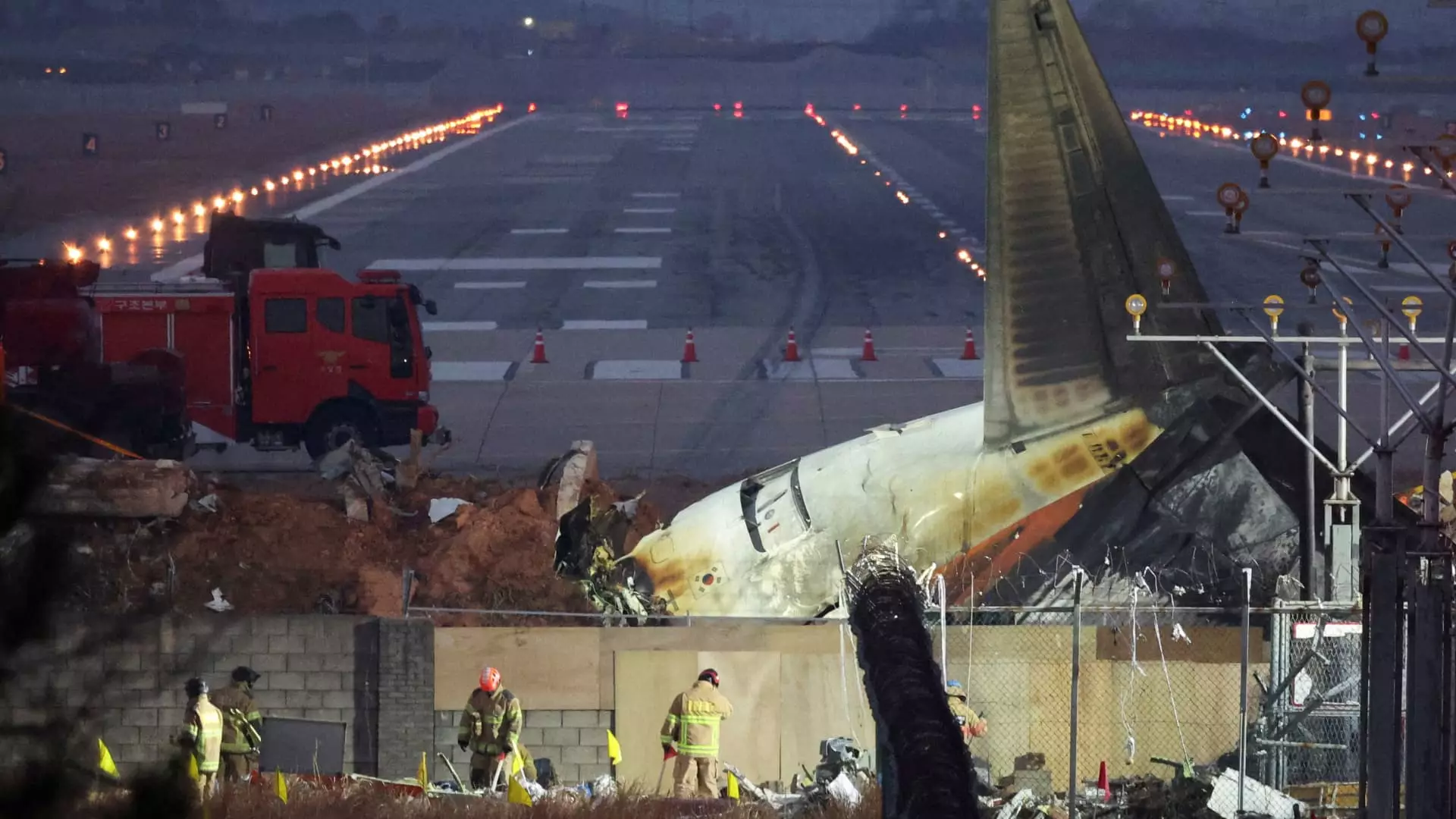The recent crash of Jeju Air Flight 7C2216 has sent shockwaves through the aviation community, raising serious questions about the safety and design of airport runways. Occurring on a fateful Sunday morning, the tragedy resulted in the death of 179 individuals, with only two survivors among the 181 passengers and crew onboard. As investigations unfold, the factors contributing to this disaster—specifically, the design elements surrounding the runway—are being scrutinized more than ever.
A significant point of contention among aviation experts is the positioning of a dirt mound and a concrete wall just beyond the end of the landing strip where the Boeing 737-800 made its fatal landing. This poorly designed infrastructure has been implicated in exacerbating the situation during the landing mishap. Todd Curtis, a safety expert with a background at Boeing, argued that the combination of these obstructions likely hindered the aircraft’s ability to come to a safe stop. The runway should provide a means for safe landings and rollouts, yet the existing structures may have transformed what could have been a survivable incident into a catastrophic disaster.
The investigative process regarding this crash is expected to be a lengthy and complex endeavor. Authorities will pore over a multitude of elements—from maintenance logs to cockpit recordings—to uncover the multifaceted causes behind the incident. Initial findings suggest that a bird strike may have resulted in engine failure, but experts caution against jumping to conclusions at this early stage. For families and the community, the search for answers becomes a painful journey as they grapple with the aftermath of this tragedy.
One of the distressing insights emerging from expert analyses reveals that fatalities might have been reduced had the plane been able to land safely without colliding with the concrete wall. Aviator John Cox postulates that the blunt force trauma sustained by the majority of the deceased passengers could likely be attributed to this impact. This raises valid concerns about whether airport design protocols are stringent enough to prevent such tragedies.
In contrast to the situation at Jeju International Airport, established aviation safety practices emphasize the importance of using engineered material arresting systems (EMAS) at major airports. For instance, New York’s LaGuardia Airport features these systems, designed to absorb impact and slow down overrunning aircraft. This crucial safety measure markedly decreases the potential for devastating outcomes when a plane fails to stop in time. The absence of similar systems at Muan International Airport raises pressing questions regarding the adequacy of safety measures in place across South Korean airports.
The Jeju Air Flight 7C2216 tragedy serves as a grim reminder of the ongoing challenges surrounding aviation safety and infrastructure design. As investigators work diligently, it becomes clear that both regulatory bodies and airport authorities must reevaluate existing designs to prioritize safety and minimize the risk of future disasters. The ultimate goal should be that the lessons learned from this tragedy contribute to not just policy changes but also to enhanced engineering practices aimed at safeguarding lives in future flights.


Leave a Reply